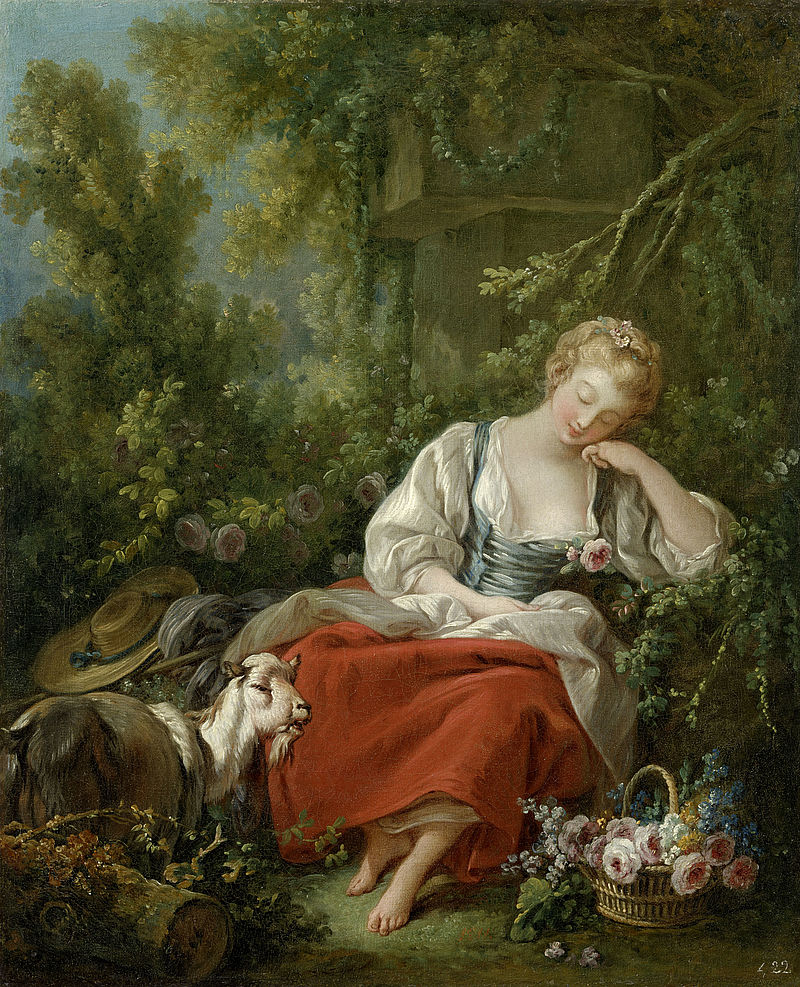La Rêveuse – Dreaming Shepherdess
François Boucher (1703 - 1770)
Framesize 72.00 x 64.00 x 7.00 cm
Pastoral scenes which, prior to the 18th century, were to be found in France exclusively in literary form, were typical of French painting under Louis XV. They developed from the fêtes galantes of Antoine Watteau (1684–1721), showing the diversions of courtly society in park-like settings, and the fêtes champêtres – the rural festivities of Jean-Baptiste Pater (1695–1736), combining courtly and country life.
Boucher was the first to paint high-quality pastoral scenes, laying down the standards for the genre, as it were, and showing idealised scenes from the love life of amorous shepherds and shepherdesses.
In the Salzburg painting, a young Dreaming Shepherdess reclines against a stone wall overgrown with green bushes, amid lush vegetation. Her loosened bodice, plunging neckline and reddened cheeks are indicative of her thoughts. A basket of fragrant flowers stands by her bare feet. The viewer is borne off into a blissful, idyllic world. Boucher, a master of titillating scenes, exploits a number of sensuous charms: the pale skin tones, the soft, smooth fabrics, colours and lighting.
Comparison with the reversed print of the painting and with an oval painting dated 1763 indicates that the Salzburg painting is a late work, executed after 1760, probably about 1763.
Louis XV’s mistress, Madame de Pompadour, who wielded considerable political influence, was particularly keen on Boucher’s refined interpretations of amorous scenes. In 1765, the artist was appointed Premier peintre du roi.
HABERSATTER Thomas: Boucher François, La Rêveuse-Dreaming shepherdess, in: DUCKE Astrid, HABERSATTER Thomas, OEHRING Erika: Masterworks. Residenzgalerie Salzburg. Salzburg 2015, p. 116
Download of this artwork is permitted for private use only.
Here you will find our license for non-commercial use.


